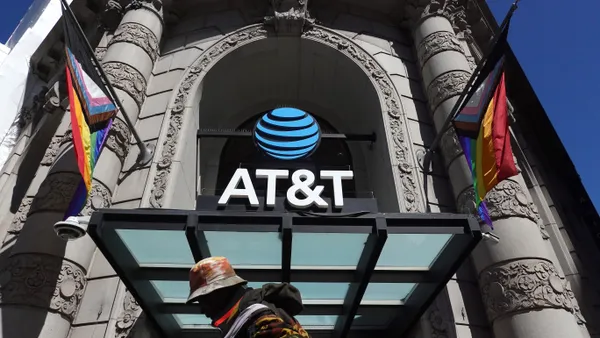Roughly two-thirds of corporate fraud goes undetected. This statistic challenges a notion that most businesses believe — they have fraud under control. So, what’s driving the disconnect?
To start, fraudsters are finding new ways to take advantage of companies faster than traditional detection methods have evolved. They’re exploiting gaps in manual review, rules-based systems, and outdated controls, among other areas. Together, the gaps are enough to cost the average organization about 5% of its annual revenue.
Solving this problem could require a shift in how your company thinks about fraud prevention. Instead of reacting after the damage is done, it may be time to leverage AI to find and stop instances of fraud proactively.
Why Traditional Fraud Detection Methods Fall Short
Traditional fraud prevention tactics are no longer getting the job done because of three key limitations. First, they tend to rely on a lagging detection system. This means manual reviews or periodic audits, which don’t catch fraud until after it’s already occurred.
Second, traditional methods use rule-based reasoning, which can easily be exploited. For example, a company might only flag payments about a certain threshold. If a scammer knows that, they could easily avoid detection simply by staying below the threshold that would activate an alert.
Finally, many businesses have siloed data. They lack real-time visibility across invoices, payments, and vendor data, which makes fraud possible. When data is siloed, it takes longer to connect the dots and identify suspicious patterns.
How AI Transforms Fraud Detection in Real Time
Artificial intelligence offers the most direct and cost-efficient path to addressing the issues of traditional fraud detection. It continuously analyzes transactions as they occur in real time, issuing alerts faster to stop fraud as it starts.
Some of the most important innovations AI brings to fraud prevention include:
- Anomaly detection: Identifying unusual payment behaviors and deviations as they occur, curbing the risk of lagging detection.
- Real-time risk scoring: Automatically assigns risk scores to transactions to help teams prioritize the most urgent threats.
- Behavioral analysis: Goes deeper into the data to detect subtle patterns of fraud based on how a vendor interacts with your company over time.
These tools make it significantly easier for businesses to find and intervene in fraud before it occurs. Without them, the same fraud may not be detected until after the money is already lost.
"Fraud is no longer something businesses can afford to react to after the fact,” says Iris Schimke, CEO and President of Express Info, a SaaS Cloud Solutions provider focused on finance, accounting, and operations. “With the evolving sophistication in phishing emails and spoofs there is just not enough training that anyone can give to their people today. We must get proactive in the prevention versus reaction to fraud. There isn’t a CEO or CFO I talk to today that hasn’t had a brush with fraud at their own companies or know someone close who has. That money is never recoverable, so prevention is the only cure. By moving from reactive to proactive fraud prevention, companies can protect their bottom line, reduce manual workload, and stay one step ahead of those looking to exploit vulnerabilities in their accounts payable systems. And for our clients we chose Yooz to meet that challenge.”
Case in Point: AI-Driven Fraud Detection in Accounts Payable
Accounts payable is one of the most fraud-prone areas in business. It’s a prime target for invoice, vendor, and payment scams, among others. That’s why more and more companies are using AI-powered solutions like YoozProtect.
These technologies leverage AI to find and detect AP fraud with minimal human input. They help businesses fight fraud in real-time by:
- Analyzing invoice metadata to detect subtle alterations (e.g., changes in font, bank details, or payment terms).
- Applying AI, Machine Learning, and Deep Learning models to identify high-risk vendor behaviors before payments are processed.
- Leveraging statistical fraud analysis, like Z-scores, to flag invoices that deviate from expected patterns.
This level of fraud prevention goes far beyond traditional strategies like rule-based reasoning and lagging detection. It also helps to eliminate data silos, so you always get the full story on fraud risk in accounts payable.
The Business Case for AI in Fraud Detection
AI-powered fraud detection tools are an investment that can pay dividends for years to come. They automate fraud prevention, which reduces manual workloads for finance teams. That means more hours in the day to drive value to the business in other ways.
These tools also help companies meet compliance requirements without the inefficiencies of manual audits. For example, AI powered solutions can tell you whether you’re compliant in a few minutes, while a team of humans may take days to review the same data.
Ultimately, companies lose millions of dollars to fraud every year. AI-driven detection dramatically reduces this risk in your business. That alone often makes the technology worth prioritizing for investment.
Final Thoughts: Moving from Reactive to Proactive Fraud Prevention
AI-driven fraud detection tools empower businesses to take more proactive stances against fraud. They help teams in IT, finance, and across the business find and stop fraud before it can hurt the company’s bottom line — a benefit potentially worth millions.
Companies that invest in AI-powered fraud detection tools like YoozProtect gain a competitive edge. They reduce risk, boost efficiency, and protect financial integrity in a single stroke.
Moving from reactive to proactive fraud prevention takes money and a willingness to adapt. But the process should pay for itself — both in the money saved from fraud and the extra time it opens in your employees’ schedules.










